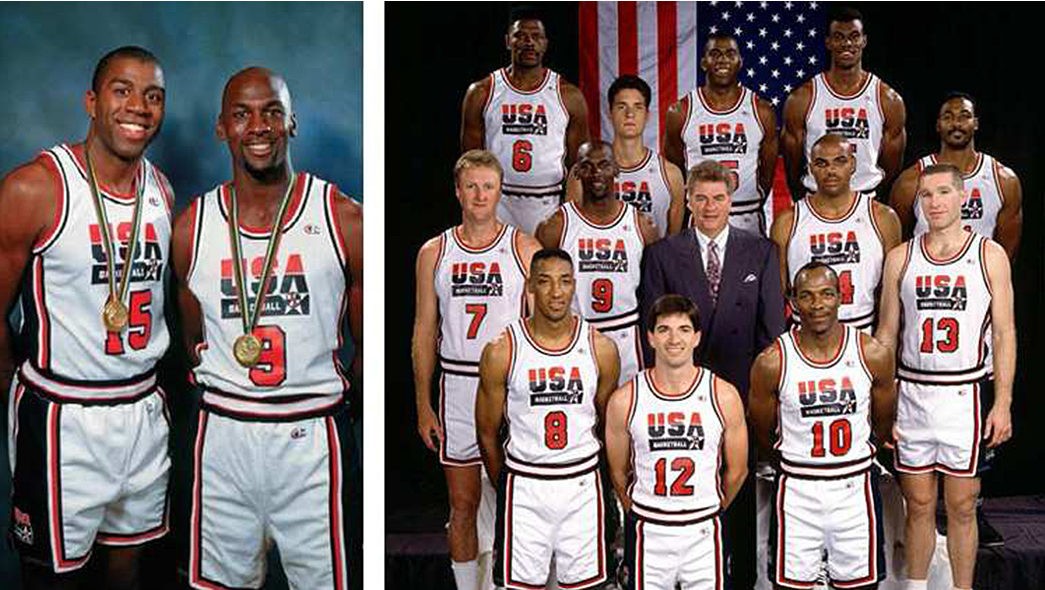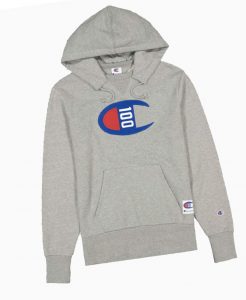You may be surprised to learn that some of the most iconic brands surrounding hip-hop and sneaker culture never actually sought out to reach the customers they have to day. Let's take Polo by Ralph Lauren for example. Ralph Lauren originally chose the sport of polo to represent his brand, because he believed the sport itself was representative of the aspired class and style of his clothing. But nowadays, Polo is closely associated with hip-hop culture. What about Timberland?
Timberland is a brand that focuses on outdoor wear for people who like hunting and fishing. And yeah, almost every single rapper that you've heard of can be seen rocking Timbs. DJ Khaled even has his own signature boot. And what about Carhartt Workwear? Since first appearing in rap videos in the early '90s, Carhartt has become a staple brand in hip-hop culture.
If you've been paying attention to hip-hop culture over the past couple of years, you might have noticed the omnipresent Champion trademark logo. How did Champion suddenly become the hottest brand next to Supreme? How did a brand that was sold for cheap at Walmart less than a decade ago, become so relevant in the world of sneakers and hip-hop? Like most companies, it didn't start out that way. In fact, Champion was founded nearly 100 years ago in 1919, by the New York brothers William and Abraham Feinbloom.
The Feinbloom brothers originally named the company the Knickerbocker Knitting Company. I can barely say that. Pretty lame name, right? At first, the company's main focus was manufacturing knitted goods. But in the early 1920s there was a sudden demand for athletic wear, and the Feinbloom brothers took note of this.
In 1923, the Feinbloom brothers changed the company name to Champion Knitwear, and in the years that followed, Champion wisely started to sell directly to college sports teams. The business of selling directly to universities, began with a successful partnership with college football team the Michigan Wolverines. Soon, all of Michigan State University sports teams were being outfitted by Champion. Eventually, Champion's products were slowly adopted by the non-athletes on college campuses as well. Champion was carried by many college bookstores, and its warm, no-fuss clothes were a hit.
This led to a surge of word-of-mouth from Michigan coaches speaking with coaches at other colleges across the country. This eventually propelled Champion to the forefront of athletic wear. This was 100 years ago. Why does champion still remain on the top after all these years? It's simple. Champion's quest to perfect performance design, led them to innovate a plethora of new technologies. In 1920, Champion's rival, Russell Athletic Co., pioneered the cotton sweatshirt. Hard to believe this was an exciting invention back then, but it was. Around the same time, Champion designed a sweater that would protect the athletes during the cold and during training.
This legendary design is what we know now as the hoodie. Champion had the foresight to invent the hoodie nearly 100 years ago. Pretty insane, right? But that's not the only invention that Champion patented. The Feinbloom brothers created an anti-shrink and heat preventive technology called Reverse Weave. Reverse Weave is a technology that Champion still puts to use today, with their signature stretch knit side panels on sweatshirts, and gussets on sweatpants. Champion would later patent reversible T-shirts, and the breathable mesh technology that can be seen on modern-day sports jerseys. I think it's safe to say that Champion fundamentally changed the world of sportswear.
During the 1950s, the company's official name was Champion Knitwear, and the official logo for the brand was a running man crossing the finish line inside of the letter C. It wasn't until 1967 that Champion changed their name to Champion Products, and the iconic logo that we all know today was born. During the 1960s, Champion entered into an intensive licensing program, which started with the NCAA, National College Athletic Association, and expanded in the 1970s with the huge partnership with the NFL. Yes, the 1970s was a glorious time for Champion.
Fast forward to the year 1990. This was a big year for the company. Probably their most important year. They were chosen to produce the uniforms for all 27 teams in the NBA. This made Champion the go-to brand for all on and off-court merchandise in the NBA. Two years later, Champion also became the official outfitter for the Olympic Basketball Team for the Summer Olympics, which included Michael Jordan. This helped the brand grow a reputation outside of the U.S. and go global.
The iconic C logo was seen everywhere, from music concerts to skate parks, and even movies. Around 1995, Champion's cultural position seemed to slip in favor of other brands. But around three years ago, the brand had a sudden resurgence, together with the gaining popularity of retros, '90s and streetwear. So why has Champion continued to dominate the world of sportswear?
Well, in recent times, Champion began collaborating with high-end streetwear brands like Supreme, Vet Mall and Off-White. In fact, in the early days as a single-door skate shop, Supreme would often embroider their logos onto blank Champion hoodies, because Champion was so cheap back then. It wasn't until recent times, that they officially started collaborating. So now we know. This is a combination of '90s nostalgia and these high-profile collaborations that have helped put Champion right back to the forefront of fashion culture. With the brand's main collection of classics and limited-edition collabs, with the likes of Supreme continuing to sell out, it seems like Champion isn't going anywhere anytime soon.
It's hard to imagine a world without the C logo. What do you guys think? Do you think Champion can go another 100 years?






